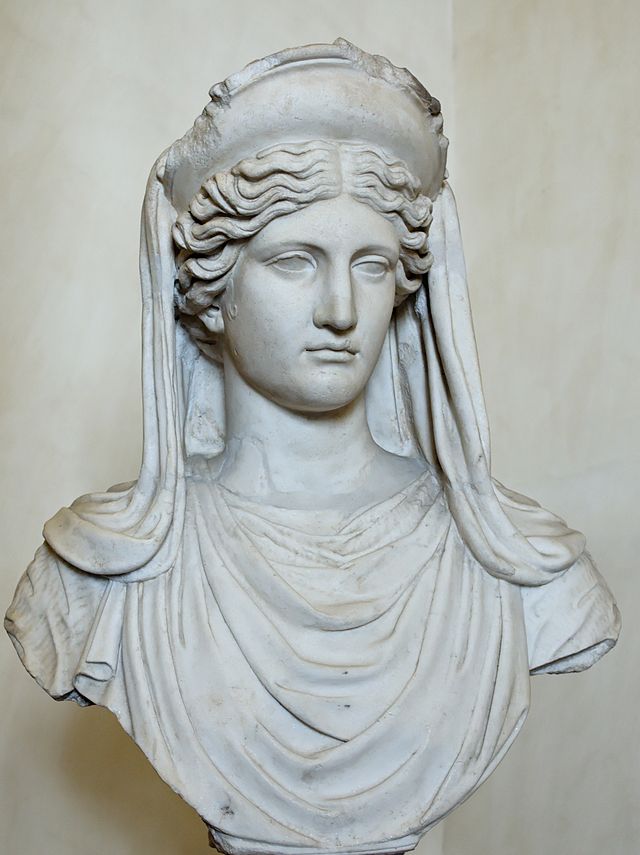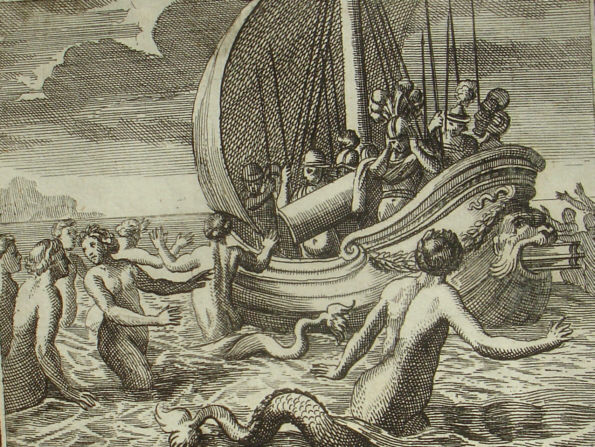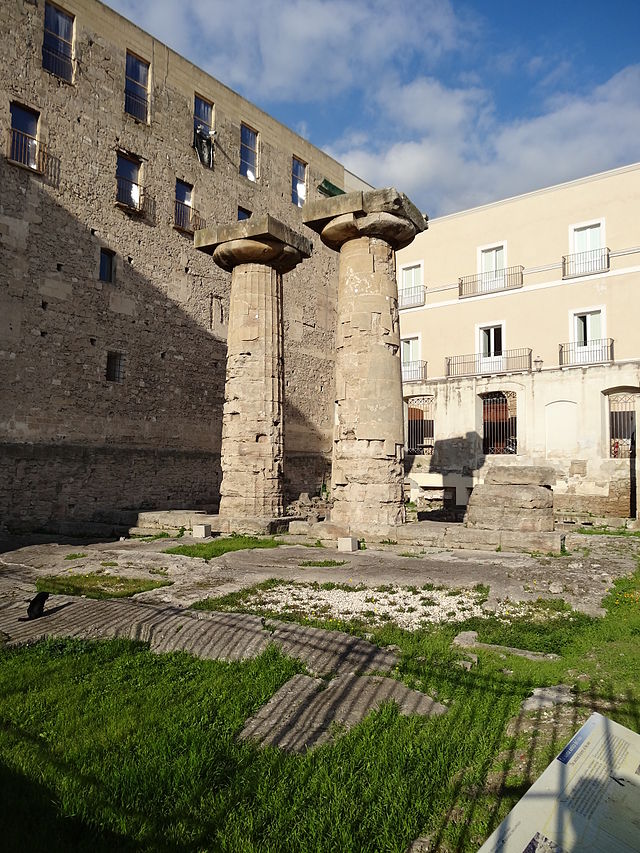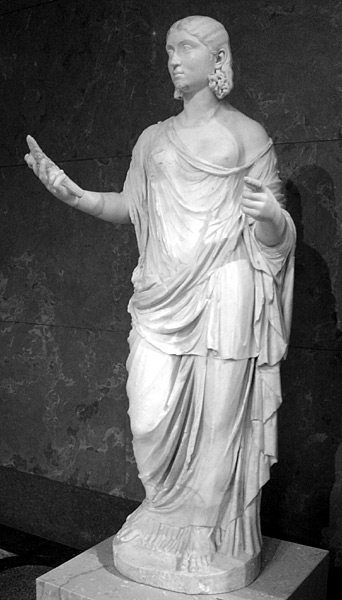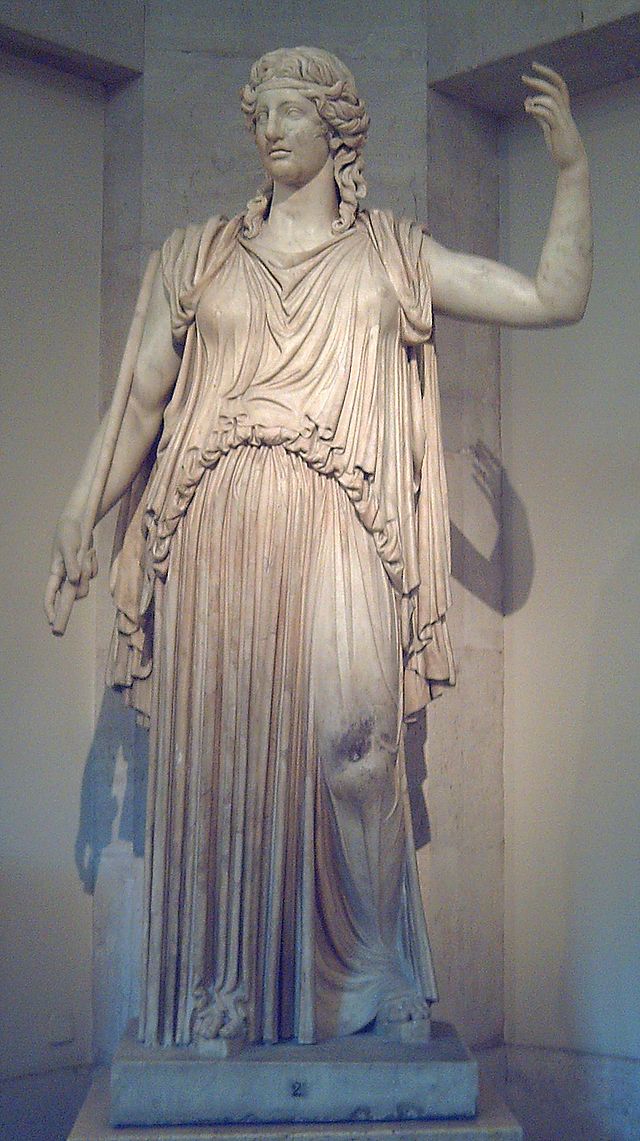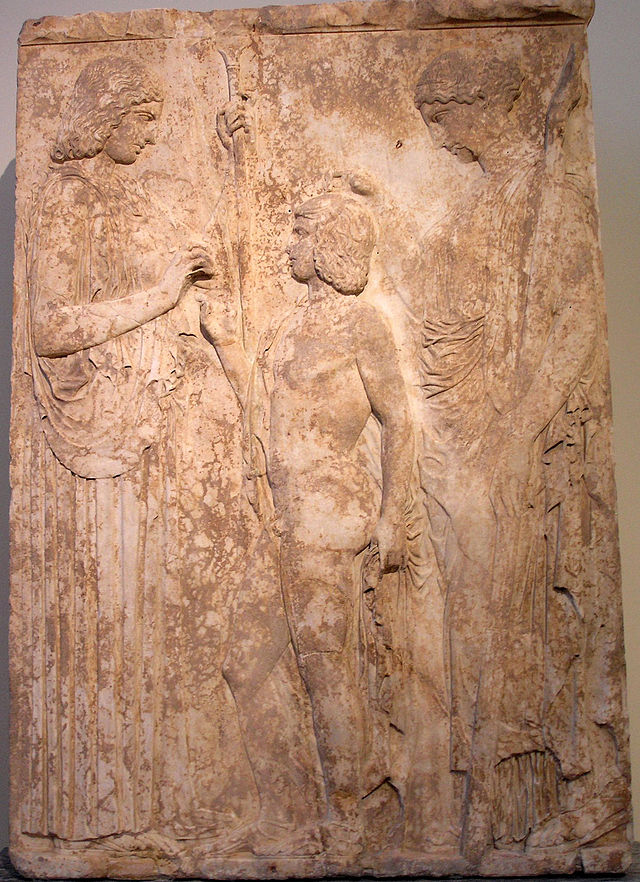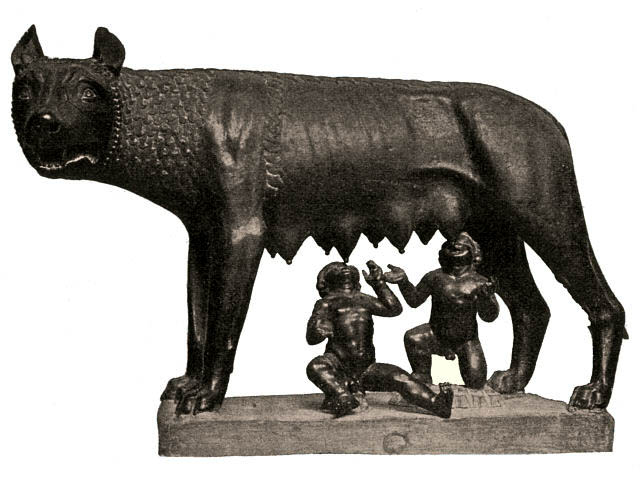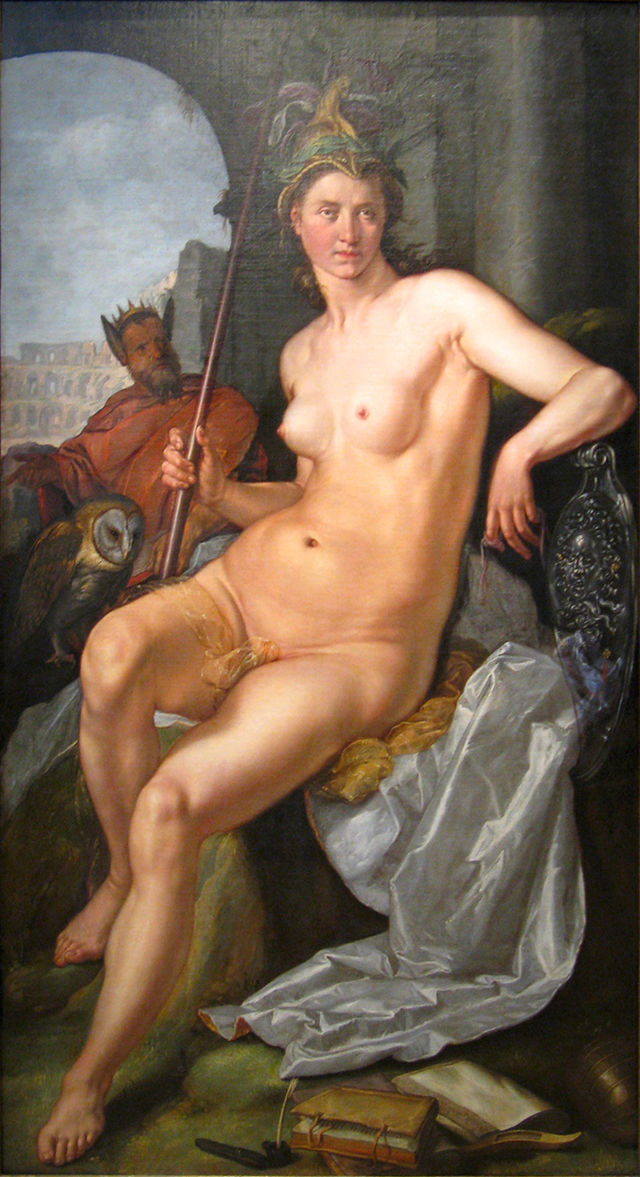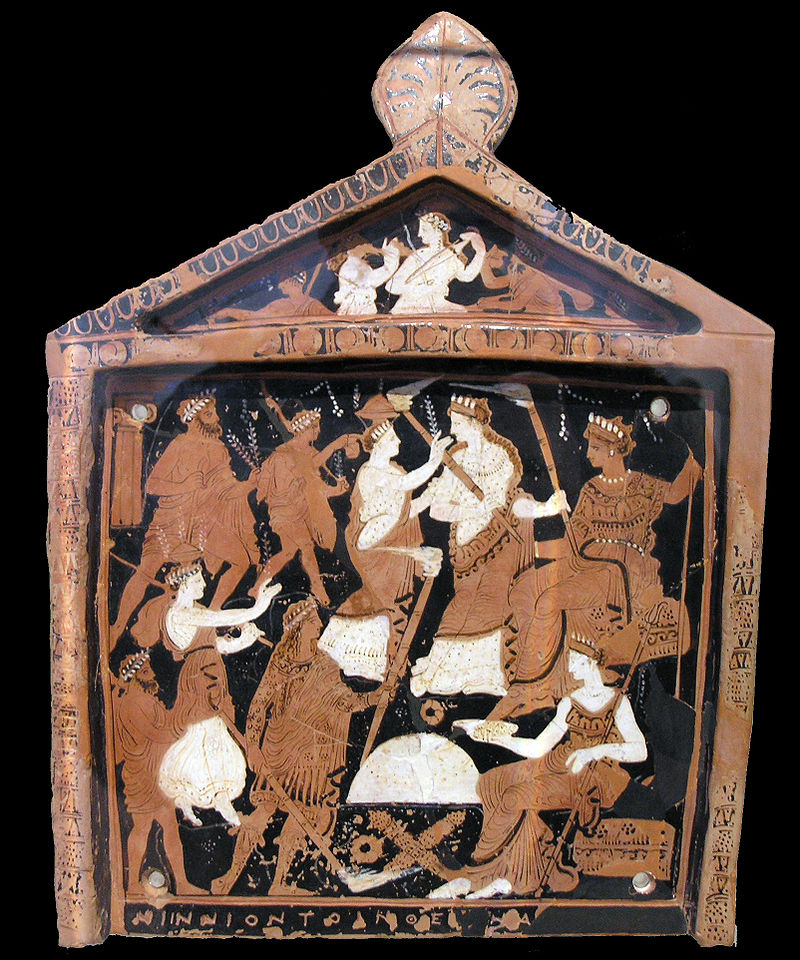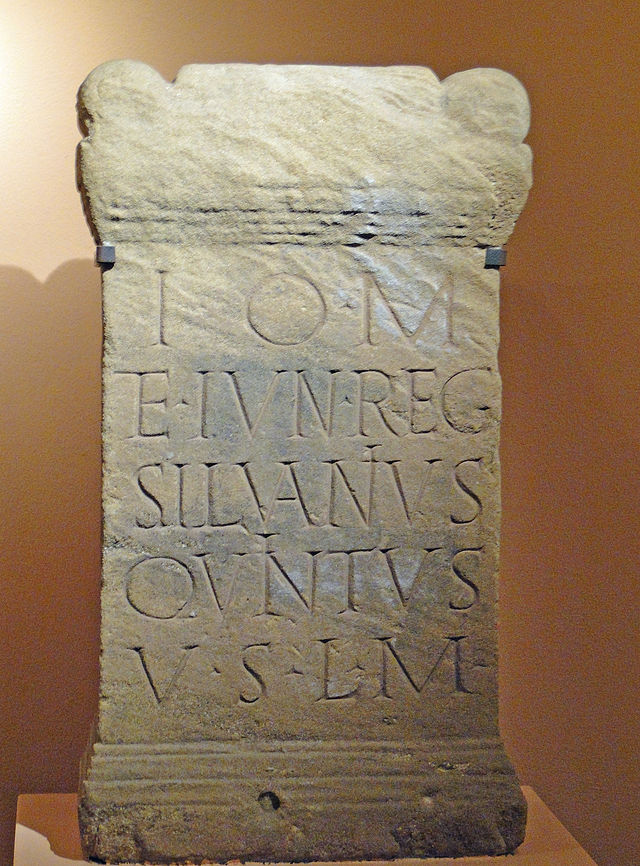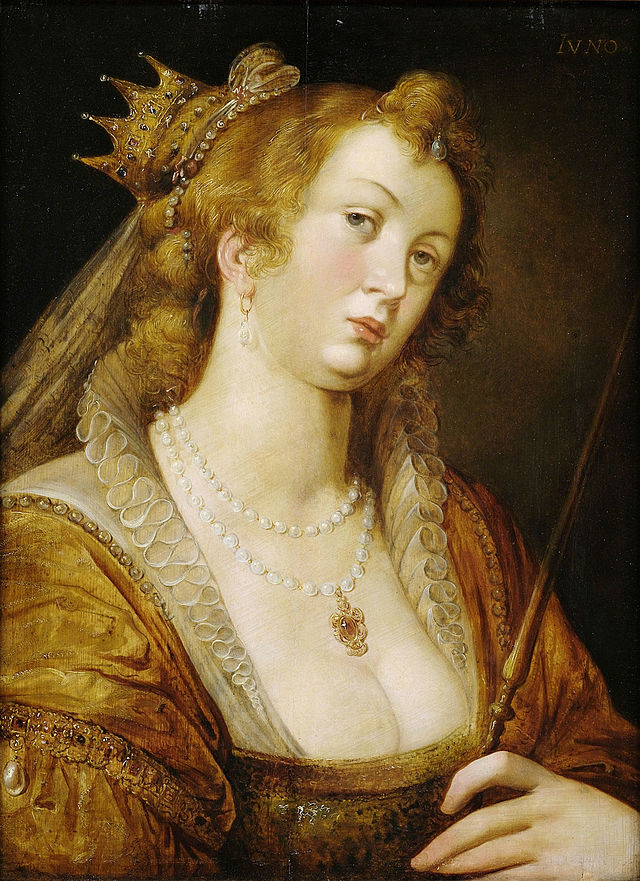ESPAÑOL – INGLÉS
PALABRA Ó FRASE Nº 1231
‘ENCONTRARSE’ verbo
1 (por casualidad) To meet; me encontré con Carlos por la calle,
I met Carlos in the street.
DEMÉTER
Deméter1 o Demetra2 (en griego antiguo Δημήτηρ o Δημητρα, ‘diosa madre’ o quizás ‘madre distribuidora’, quizá del sustantivo indoeuropeo *dheghom *mater) es la diosa griega de la agricultura, nutricia pura de la tierra verde y joven, ciclo vivificador de la vida y la muerte, y protectora del matrimonio y la ley sagrada. Se la venera como la «portadora de las estaciones» en un himno homérico, un sutil signo de que era adorada mucho antes de la llegada de los olímpicos. El himno homérico a Deméter ha sido datado sobre el siglo VII a. C.3 Junto a su hija Perséfone eran los personajes centrales de los misterios eleusinos que también precedieron al panteón olímpico.
En la mitología romana se asociaba a Deméter con Ceres. Cuando se le dio a Deméter una genealogía, se dijo que era hija de los titanes hermanos Crono y Rea (ambos hijos de Gea y Urano), y por tanto hermana mayor de Zeus. A sus sacerdotisas se les daba el título de Melisas.
Es fácil confundir a Deméter con Gea, su abuela, y con Rea, su madre, o Cibeles. Los epítetos de la diosa revelan lo amplio de sus funciones en la vida griega. Deméter y Core (‘la doncella’) solían ser invocadas como to theo (‘las dos diosas’), y así aparecen en las inscripciones en lineal B del Pilos micénico en tiempos pre-helénicos. Es bastante probable que existiese una relación con los cultos a diosas de la Creta minoica.
Según el retórico ateniense Isócrates, los mayores dones que Deméter daba a los atenienses eran el grano, que hacía al hombre diferente de los animales salvajes, y los misterios eleusinos, que le daban mayores esperanzas en esta vida y en la otra.4
Deméter y Poseidón
Los nombres de Deméter y Poseidón están relacionados en las primeras inscripciones en lineal B halladas en Pilos, donde aparecen como PO-SE-DA-WO-NE y DA-MA-TE en el contexto sagrado de echar a suertes. El elemento «DA» que aparece en ambos nombres está aparentemente conectado con una raíz protoindoeuropea relacionada con la distribución de tierras y honores (compárese con el latín dare, ‘dar’). Poseidón (cuyo nombre parece significar ‘consorte de la distribuidora’) persiguió una vez a Deméter, en su forma original de diosa-yegua. Ella se resistió a Poseidón, pero no pudo ocultar su origen divino entre los caballos del rey Oncos. Poseidón se transformó en semental y la cubrió. Deméter se puso literalmente furiosa (Deméter Erinia) por este asalto, pero lavó su ira en el río Ladón (Deméter Lusia). Le dio a Poseidón una hija Despoina, pero que cuyo nombre no podía ser pronunciado fuera de los misterios eleusinos, y un corcel de negras crines llamado Arión. En Arcadia se había adorado históricamente a Deméter como una deidad con cabeza de caballo:
La segunda montaña, el monte Elaios, está a unos 30 estadios de Figalea y tiene una cueva consagrada a Deméter Melania [‘Negra’]… los figaleos dicen que aprovecharon la cueva consagrada a Deméter y pusieron una imagen de madera en ella. La imagen fue tallada de la siguiente forma: estaba sentada en una roca y era como una mujer en todo salvo en la cabeza. Tenía la cabeza y el pelo de un caballo, y serpientes y otras bestias crecían de ella. Su quitón le llegaba justo hasta los pies, y sostenía un delfín en una mano y una paloma en la otra. Por qué hicieron el xoanon de esta forma debería estar claro para cualquier hombre inteligente versado en la tradición. Dicen que la llamaron Negra porque la diosa llevaba ropas negras. Sin embargo, no pueden recordar quién hizo este xoanon o cómo ardió, pero cuando quedó destruido los figaleos no le dieron una nueva imagen a la diosa y desatendieron largamente sus fiestas y sacrificios, hasta que finalmente la esterilidad cayó sobre el país.
===============………………………..=========================
DEMÉTER
Demeter or Demetra (in ancient Greek or Δημητρα Δημήτηρ ‘mother goddess’ or perhaps ‘distributor mother’, perhaps substantive Indo-European * d h h om eg * mater) is the Greek goddess of agriculture , nutrient Pure green and young earth, giving cycle of life and death, and protector of marriage and the sacred law. She is revered as the “carrier of the stations ‘in a Homeric hymn , a subtle sign that she was worshiped long before the arrival of the Olympic . The Homeric Hymn to Demeter has been dated to the seventh century. C. Along with her daughter Persephone were the central figures of the Eleusinian Mysteries that also preceded the Olympic pantheon.
In Roman mythology Demeter was associated with Ceres . When Demeter was given a genealogy, was said to be the daughter of the brothers Titans Cronus and Rhea (both children of Gaia and Uranus), and therefore older sister of Zeus . In her priestesses were given the title of balms .
Demeter is easily confused with Gaia , his grandmother, and Rea , his mother, or Cybele . The epithets of the goddess reveals the breadth of their functions in Greek life. Demeter and Core (‘maiden’) used to be invoked as to theo (‘the two goddesses’), and thus appear in the inscriptions in Linear B from Pylos Mycenaean times in pre- Hellenic . It is quite likely that there was a connection with the goddess cults of Crete Minoan .
According to the rhetoric Athenian Isocrates , the greatest gifts that Demeter gave the Athenians were the grain , which made man different from wild animals, and the Eleusinian mysteries, which gave him more hope in this life and in the other .
Demeter and Poseidon
The names of Demeter and Poseidon are related in the first inscriptions in Linear B found at Pylos, where they appear as PO-SE-DA-WO-NE and DA-MA-TE in the sacred context of casting lots. The ‘DA’ element that appears in both names is seemingly connected with a root protoindoeuropea related to the distribution of land and honors (compare Latin dare, ‘give’). Poseidon (whose name seems to mean ‘consort of the distributor “) once pursued Demeter, in its original form of goddess- mare . She resisted Poseidon, but he could not hide his divine origin between the king’s horses Oncos . Poseidon became a stallion and covered. Demeter became literally furious (Demeter Erinys) by this assault, but washed his anger on the river Ladon (Demeter Lusia). He gave Poseidon a daughter Despoina , but whose name could not be pronounced outside the Eleusinian mysteries and a mane of black steed named Arion . In Arcadia had historically worshiped Demeter as a horse-headed deity:
The second mountain, Mount Elaios , is about 30 stadiums Figalea and has a consecrated to Demeter Melania [‘Black’] … figaleos say the cave took the cave sacred to Demeter and put a wooden image in it. The image was carved as follows: sat on a rock and it was like a woman in all but the head. His head and hair of a horse, and snakes and other beasts grew it. Her chiton stopped just to the foot, and holding a dolphin in one hand and a dove in the other. Why did the xoanon in this way should be clear to any intelligent man versed in tradition. They say that the goddess called Black wearing black clothes. However, they can not remember who did this or how xoanon burned, but was destroyed when the figaleos not given a new image to the goddess and largely disregarded their feasts and sacrifices, until finally barrenness fell upon the country.
Fuente: http://es.wikipedia.org
